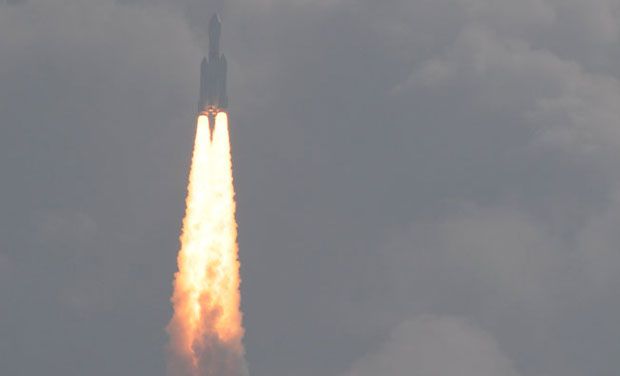
Sriharikota (AP): Taking steps towards realising India’s ambition to send humans into space, ISRO on Thursday successfully tested the atmospheric re-entry of a crew module after its heaviest launch vehicle GSLV Mk-III blasted off from here.
Exactly 5.4 minutes after lift off at 9.30 am from the Second Launch Pad of Satish Dhawan Space Centre here, the module separated from the rocket at an altitude of 126 km and re-entered Earth’s atmosphere (about 80 km from sea level).
It descended in a ballistic mode and splashed down into the Bay of Bengal, some 180 km from Indira Point, the southern tip of the Andaman and Nicobar Islands.
The LVM3-X flight with active S200 and L110 propulsion stages and a passive C25 stage with dummy engine, carried CARE (Crew Module Atmospheric Re-entry Experiment) as its payload.
Weighing over three tonnes, the 2.7-metre tall cup cake shaped crew module with a diameter of 3.1 metres, which features aluminium alloy internal structure with composite panels and ablative thermal protection systems, was made to safely drop down into the sea by specially-made parachutes from Agra-based DRDO lab Aerial Delivery Research and Development Establishment.
The experiment also witnessed the largest parachute in action ever made in the country. The main parachute, which helped the crew module touch the waters at around 7 metre/second speed, was 31 metres in diameter.
Soon after the successful test flight, a delighted ISRO Chairman K Radhakrishnan said, “This was a very significant day in the history of Indian space programme for the development of the advanced launch vehicle that could carry a 4-tonne class of communication satellite into orbit.”
The crew module, which can carry up to two to three astronauts, withstood a heat of around 1,600 degree Celsius, while it travelled towards the surface of the Earth attracted by gravity.
The module would be tracked by Indian Coast Guard ships and then taken to Kamarajar Port in Ennore near Chennai, from where it would be shited to Vikram Sarabhai Space Centre at Thiruvananthapuram in Kerala for further study.
This experimental mission has helped ISRO with two primary lessons — to study the flight validation of the complex atmospheric flight regime of LVM3 vehicle and study the re-entry characteristics of CARE crew module.
“India started the development process a decade ago and just now we completed the first experimental flight of the GSLV Mark III vehicle christened as LVM Mark III,” Radhakrishnan said from the Mission Control Centre.
“The performance of the two solid stages S200 as well as the liquid core stage L110 was as expected,” he said.
“We also had another experimental module in this mission that is the unmanned crew module test to understand the re-entry characteristics. That also worked extremely well and the crew module has splashed down as expected in Bay of Bengal,” he said.
Radhakrishnan thanked the entire team for making the project possible and added “with the completion of the development of the high thrust cryogenic engine which has progressed very well, we expect to come back with a developmental flight of this vehicle LVM-3 in another two years.”
This is the first time ISRO was carrying a payload weighing over three tonne. The national space agency’s first space recovery experiment (SRE-1) module, launched by a PSLV rocket in January 2007, weighed only 555 kg and that too was not a crew module.
Though it would take at least 10 years for India to send humans into space, this experiment has helped the space agency to test the module for safe return of humans from space, according to ISRO.
While the heavy duty cryogenic engine is still under development in one of the ISRO labs at Mahendragiri in Tamil Nadu, today’s attempt was to primarily study the atmospheric performance of GSLV Mk III in the first two stages.
Once ISRO masters its GSLV Mk III, the country can save a massive amount of the foreign exchange it presently is spending to send its heavy communication satellites through other space agencies aboard.
The heavy launch vehicle would also help India earn considerable foreign exchange by sending heavy satellites for other countries, in addition to the revenue PSLV rockets are already securing for ISRO’s commercial arm Antrix Corporation Limited.
This CARE module is expected to enhance ISRO’s understanding on re-entry and parachute phases of crew module.
The total budget of the experimental mission was Rs 155 crore, including the crew module, which cost Rs 15 crore.


